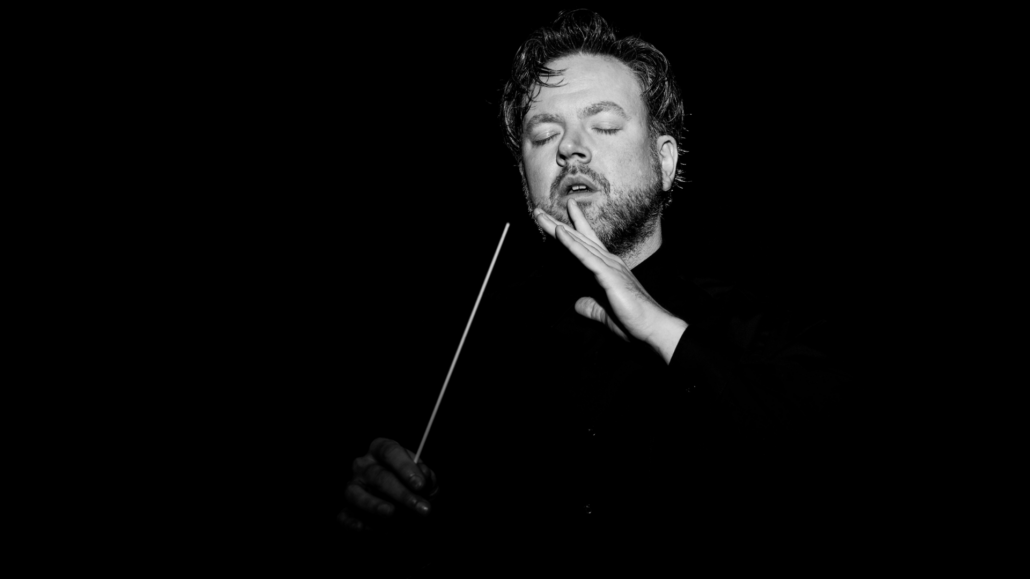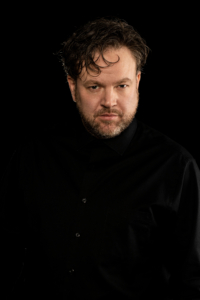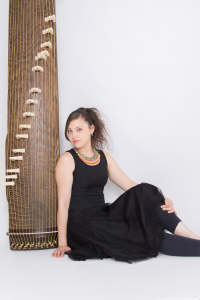NOVEMBER 26, 2023
BEING ROBERT SCHUMANN – SPRING
One certainly can’t accuse Rita Ueda of failing to keep her promises—although she’s not averse to pushing a deadline. The genesis of Bloom, her gorgeous new concerto for the harp-like koto and orchestra, can be traced back 25 years or more, to when she was studying composition at CalArts in Santa Clarita, California, under Wadada Leo Smith. The esteemed composer, visual artist, and educator has a secret passion for the koto, Ueda reveals, and in fact plays it very well, at least for someone whose primary instrument is trumpet.
“We talked about what I might do one day when I got the chance to write for orchestra and koto,” Ueda says. “I promised him I would write an improv orchestra piece, and I would make it so that the orchestra would do it with a big smile on their face.”
Based on Bloom’s premiere, with the Vancouver Symphony Orchestra in March of 2023, she’s succeeded wildly. Not only has she integrated improvisation into Bloom’s score so deftly that it’s hard to tell where the written music leaves off and spontaneous invention begins, she’s also created an intercultural concerto where, for once, the “ethnic” soloist—in this case Japanese-Australian koto virtuoso and singer Miyama McQueen-Tokita—isn’t constrained by the demands of a Western orchestral setting.
“This a problem with the vast majority of intercultural music so far: the intercultural player is the one that is bending over backwards to work with the Western players,” the Hokkaido-born composer points out. “So what I wanted was for the Western players to meet Miyama halfway. I wanted to create a situation where everybody is meeting halfway, and everybody is trying something new.”
Some compromises were necessary. In Japanese music, for instance, improvisation is just as foreign to most koto players as it is to orchestral violinists; McQueen-Tokita had to push beyond her comfort zone in learning Ueda’s music. She also had to modify her vocal style to some degree—not to accommodate the orchestra, but to function in the usual orchestral setting of a large, airy room.
“That’s something I was very conscious about,” McQueen-Tokita allows, although she adds that growing up in an intercultural family gave her an edge in this department. “My musical background itself is sort of hybrid,” she explains. “I started learning the koto when I was seven years old, and I was also learning the piano. And my mother is a musicologist but also a singer, and she does very much Western singing. We sang in church and I sang in a choir, but all my professional career has been koto, and so all my professional singing training was in the Japanese style of ko-uta—a singing style that is specific to koto and shamisen music from the Edo period. So it was interesting: I had to use Japanese vocal techniques while singing in English!”
Composer, soloist, and orchestra all managed to negotiate these challenges, but what’s even more striking about Bloom—which Ueda built around a poem written by her longtime friend Heather Capocci—is the way in which it integrates the swelling optimism of cherry-blossom time with the melancholy knowledge that such beauty exists only briefly. Ultimately, though, the message is positive.
“I wanted to shape a story,” Ueda says. “The poem is about the life cycle of many, many women out there; you’re one thing when you’re a young person, and then you get married and you have a role as a mother, or you have a career. And then that phase ends and you go on to something else. When one flower sort of falls off, you have another flower that blooms. You’re constantly reinventing yourself, and you’re constantly ready to bloom into something else.”
This theme fits well with the Being Robert Schumann series, as curated by the Victoria Symphony. It illustrates how Schumann’s music has retained its power to surprise over the course of almost two centuries, how it was shaped by his predecessors, and how it has survived through the work of his friends, acolytes, and successors. Through the Hugh Davidson Fund at the Victoria Foundation, the VS and VSO have commissioned four pieces by Canadian composers, using Schumann’s works as a starting point.
Here the stimulus began with Schumann’s seasonally apt Symphony No. 1 in B-flat major, nicknamed the “Spring” symphony for its youthful optimism. In addition, there are excerpts of Felix Mendelssohn’s music for A Midsummer Night’s Dream: the Overture, Nocturne, and Scherzo.
“There’s an obvious connection between Mendelssohn and Schumann, with Mendelssohn being the big godfather of German music at this time and Schumann being the upcoming young man,” says Victoria Symphony music director Christian Kluxen. “And the first time they met was at Clara Schumann’s home while Robert Schumann was teaching Clara piano and helping her to orchestrate her piano concerto. And then Mendelssohn dropped by because he was going to conduct the concerto. Mendelssohn always has a small part in the Being Robert Schumann series—we’ve featured a piece here, another piece there—and that connection is important to include.
“And, as you know, when Schumann was in a mental institution at the end of his life, Clara gave birth to their ninth child,” Kluxen adds. “When she asked what the child should be called, he said ‘Felix’, after Felix Mendelssohn. So there’s another big connection.”
Kluxen also traces a link between the fantastic world of William Shakespeare’s A Midsummer Night’s Dream, which Mendelssohn so expertly evoked in his music, and the increasingly phantasmagorical nightmare of Schumann’s later life. “A Midsummer Night’s Dream is all about this thing of ‘Is it real, or is it something I imagined?’” he says. “Who is really mad and who is really sane? I’m sure Schumann already felt this when he wrote his first symphony, although it was really around the time of his second symphony when he started to see small people in the room.
“Strangely enough, that was also when Schumann was composing the music for Goethe’s Faust,” Kluxen adds. “So all that is kind of frightening to know, that while he’s composing music for a piece that, again, is about reality/not reality, he starts to see strange elves in his room and things like that. You could make a movie about it!”
Yes, you could. But isn’t a concert series much more fitting?
Notes by Alex Varty




 Christian Kluxen, conductor
Christian Kluxen, conductor